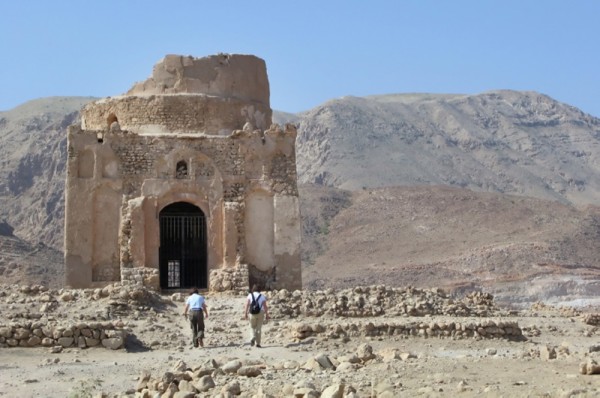
The ancient city of Qalhat in Sur has witnessed an ancient Omani civilisation and its history dates back to the Bronze Age, when it was a major city and the first capital of Oman. Also, due to many characteristics that augment its unique and distinctive location, and being an important city and port, it had the advantage of attracting travellers, explorers and seekers after knowledge.In the thirteenth century it was the main commercial port linking Oman and abroad.
The city of Qalhat is in the UNESCO list of World Heritage Sites for its historical significance and its role in Oman’s evolution between the 11th and 15th centuries. The ruins of Qalhat include Bibi Mariam’s shrine who is said to be an elderly woman who built a mosque, while some historical sources mentioned that she was the governor of Qalhat during the reign of King Hormuz (Kotob Eddine Yamtuhin). At the shrine entrance, there is a crypt leading to underground corridors beneath the floor of the shrine.
According to UNESCO, “The Ancient City of Qalhat presents a unique testimony to the Kingdom of Hormuz, as it prospered from the 11th to 16th century CE. Ancient Qalhat presents exceptional evidence of a major trade hub, which came under the rule of the Princes of Hormuz and profited from its geo-political position in the region.”
“It was a seasonal residence and refuge to the Princes of Hormuz, which has given it the title of a secondary capital of the larger kingdom,” the statement added. UNESCO has recognised the city’s urban plan and excavated buildings that are typical of the Kingdom of Hormuz. The United Nations body also notes that the archaeological remains provide further potential for a more detailed understanding of Qalhat’s ways of life and trade.
The Tourism Ministry said that Qalhat was once a shining jewel along the Omani coastline. “The Indian Ocean trade route brought many people through the ancient city, which Italian explorer Marco Polo described as having ‘fine bazaars and one of the most beautiful mosques,’” added the Ministry. “In the late-Middle Ages, when it was Oman’s first capital, the city was notably encircled by a fortified wall and was bustling with shops, bazaars, and houses.”
“Today, a single mausoleum is all that bears witness to the city’s former glory. Some say the lonely tomb was built by Baha al-Din Ayaz, king of the Hormuz Empire, for his wife, Bibi Maryam. But others maintain that it was indeed her who built it for him,” said the Ministry.
Recently The Ministry of Heritage and Tourism signed an agreement with the Oman Liquefied Natural Gas (LNG) Company to rehabilitate the ancient city of Qalhat. A statement issued online by the Oman News Agency, (ONA) said: “The Ministry of Heritage and Tourism signed an agreement with the Oman Liquefied Natural Gas (LNG) Company to finance the first phase of project for rehabilitation of the ancient city of Qalhat in the Wilayat of Sur, which consists of establishing management and protection offices for the site, visiting paths, signboards, viewing platforms and other such basic facilities.”